Hello and welcome back to Bake Experiments - where we play with flavours and techniques. With a bit of baking history & folklore thrown in too.
Thank you so much for being here. I hope you enjoy this post. And if you like what you read? Please do subscribe, share or like. Thank you.❤️
Before we begin, a little shout out. Bake Experiments now has a sister publication: Cooking the Stacks.
As regular readers will know, this project started here, in Bake Experiments. But, I have been enjoying myself so much, and have received such wonderful, positive feedback from readers, it is now a stack in its own right. And I hope you will join me on this journey in experimental home cooking.
This week I am cooking the bright, sunny California cuisine of
from her vibrant Betty Eatz Newsletter. Including Orange Chicken, Dirty Martini Steak Frites and Roasted Tomato Soup with Gochujang drizzle. Why don’t you pop over and check it out!Now, to the love letter…
Welcome to the third edition of my ‘A love letter to…’ series. Once a month I show my love for, and experiment with, slightly more unusual flavour pairings, giving you fresh ideas for your bakes.
So far we have enjoyed Orange and Rosemary, and Peach and Oregano. And this month’s combo is Apricot & Rose.
Before we begin, the usual vote! I would be thrilled to hear what you’d like to investigate for next month’s love letter.
To Apricot & Rose,
Confession, this may be more of a love/hate relationship. These two can be tricky to bake with. Use too much rose, and you have synthetic soap in your mouth.
And fresh apricots can be shaaaarp. It always confuses me when it’s suggested they can be used interchangeably with peaches or nectarines, which are considerably sweeter. Not to mention, twice the size, so baking times would be completely different.
But when you get this combination right, it is a dream. It’s a combination food writer Niki Signit recommends to eat on the banks of the Nile. It takes the mind straight to fragrant, syrupy Apricot Baklava or powdery, pink Turkish Delight.
How to bake with Apricot & Rose
When it comes to rosewater, the main rule of thumb is to USE SPARINGLY. Literally a drop of rosewater, maybe two. Particularly when it comes to a rose cream, dairy seems to enhance that soapy flavour.
A more delicate way to incorporate a rose flavour into your bakes is to decorate them with crystallised rose petals - here’s a quick, easy guide on how to make them. Sprinkle some on top of your apricot cake for a sweet, floral flavour.
Thankfully, the tartness of apricot is an excellent counter balance for rose. You can roast, or poach fresh apricots, whizz up dried apricots into bliss balls, or - and this is my personal favourite - use an apricot glaze. Particularly good on Madeleines I find.
This flavour combination goes with a whole range of other flavours too, including:
Almond
Honey
Cardamom
Pistachio
Chocolate
Vanilla
Lychee
Orange
Raspberry
And there are some gorgeous recipes out there including:
Nigella Lawson’s Apricot & Almond Cake with Rosewater & Cardamom
Loving the tropical twist here, in Lisa Mclean’s Aromatic Apricot balls with Lychee & Rose, proving Apricot & Rose isn’t just for middle eastern flavours.
These Apricot Saffron Rose Tarts look very intriguing, as does this Chocolate Tart, with Cardamom, Apricots & Rose.
Finally, these Apricot Rose Tarts don’t technically have any rose in them. But I had to share because the little apricot roses look so adorable! Add a tiny drop of rosewater into the custard and that could be quite delectable.
Today, I have used the combination a little differently, with French almond cake, the Financier. Baked in a rectangular mould, this light and moist cake is said to resemble a bar of gold (hence the name). Just calling out for a golden Apricot & Rose glaze in my opinion.
The Experiment - To whip, or not to whip? Methods in baking Financiers
Financiers, made primarily from ground almonds, icing sugar, brown butter and egg whites, are known for being relatively plain in flavour, although I once enjoyed a delightfully chewy one dotted with raspberries at a French Bistro in New York.
When it comes to making Financiers, I have long used the Le Corden Bleu method, where the eggs are not whipped.
However, on perusing a Great British Bake Off recipe, I noticed that they did whip the egg whites to soft and floppy peaks.
Fascinated by the impact this might have on the batter, an experiment was borne.
As per all my experiments, I kept my variables constant by using the same Financier recipe; the method, ingredients, cooking time, etc, remained the same. The only difference was in one batch the eggs were whipped to soft, floppy peaks, and in the other, they were not.
The Results
Talk about a difference!
In the batch where the egg whites were not whipped, the little cakes were still tasty, but darker, chewy, stiffer and denser in texture.
However, for the whipped egg batch, they were - perhaps unsurprisingly - lighter, and melt in the mouth. They still had texture thanks to the ground almonds, but made for a more scrumptious treat with slightly better rise. The only downside was they seemed slightly under baked, needing five minutes longer.
The Recipe - Apricot & Rose Financiers, with Chantilly Cream and Roasted Pistachios
Level: Easy
Serves: Makes nine Financiers
Time: About 30-45mins
Specialist Equipment: A Financier mould, piping bags, Wilton 4b tip
Ingredients:
35g salted butter
65g icing sugar, sifted
68g egg whites
25g ground almonds
1 tsp honey
25g plain flour
1/4 tsp baking powder
For the glaze
2 tbsp apricot conserve
1 drop of rosewater
For the decoration
300g double cream
2 tbsp caster sugar
1/2 tsp vanilla paste
50g pistachios, roughly chopped
Method
Preheat your oven to 180°C/160°C fan/350°F/Gas Mark 4.
Grease your mould with butter, and then sprinkle on some flour, tipping away any excess.
Melt the butter in a saucepan. You can brown your butter at this point, which is traditional for Financiers. But I decided against it for this recipe, as I wanted to keep the sponge light to match the Apricot & Rose.
In a stand mixer, or with an electric whisk, whip your egg whites to soft, floppy peaks.
Add your icing sugar, followed by the ground almonds and honey. Using a spatula, fold in to your egg whites.
Sift your flour and baking powder and add these to your mixture, gently folding them in until incorporated.
Finally, slowly pour in your melted butter and again, gently fold in to your egg mixture.
Grab a piping bag and transfer the mixture into the bag. Cut off the end and pipe into your mould, filling until about three-quarters full.
Place in the oven and bake for 20 minutes, until your Financiers are golden brown and spring back to your touch.
At this point, your can place your chopped pistachios onto a baking tray, and roast them alongside your Financiers. They will only take about ten minutes, and give the tray a little shake halfway through.
While your Financiers are baking, place your apricot conserve into a small pan and gently melt. Once melted, take off the heat, put a drop of rosewater into the glaze and mix.
As soon as your Financiers are out of the oven, place them on a cooling rack. Using a pastry brush, gently glaze them with your apricot and rose conserve.
Once cool, pop them out of your moulds.
You can leave them as they are, this is traditionally how Financiers are enjoyed. However, if you want to get fancy with some decoration, here’s an idea:
Make your Chantilly cream by placing your cream, sugar and vanilla into a stand mixer, or use an electric whisk, and whip until firm but still smooth.
Grab a piping bag and your Wilton 4b tip, transfer the cream and then pipe some lovely spirals! Or you can forgo all the piping and just splodge it on with a spoon, whatever works for you!
Sprinkle with your roasted pistachios. I even sprayed mine with a little pink glitter. Fancy.
They are best eaten immediately. Without cream, they can last up to three days in an air tight container. With cream, they will need to be stored in the fridge. Enjoy!
Until next time…

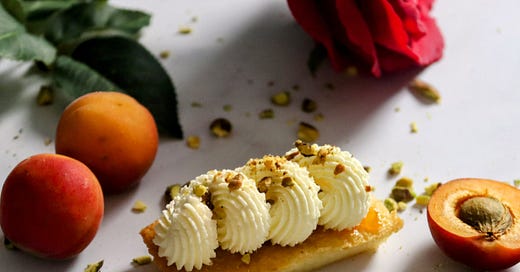




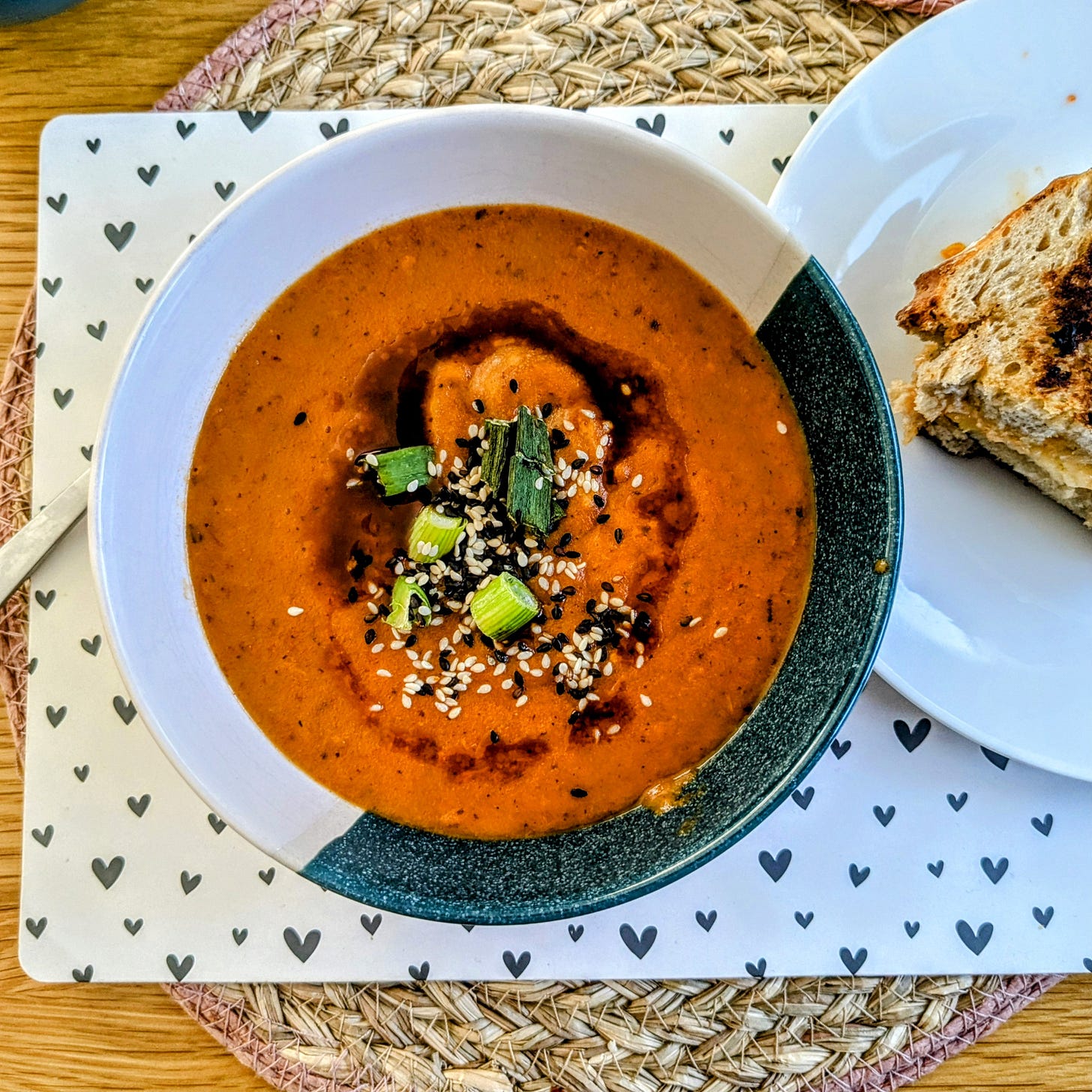
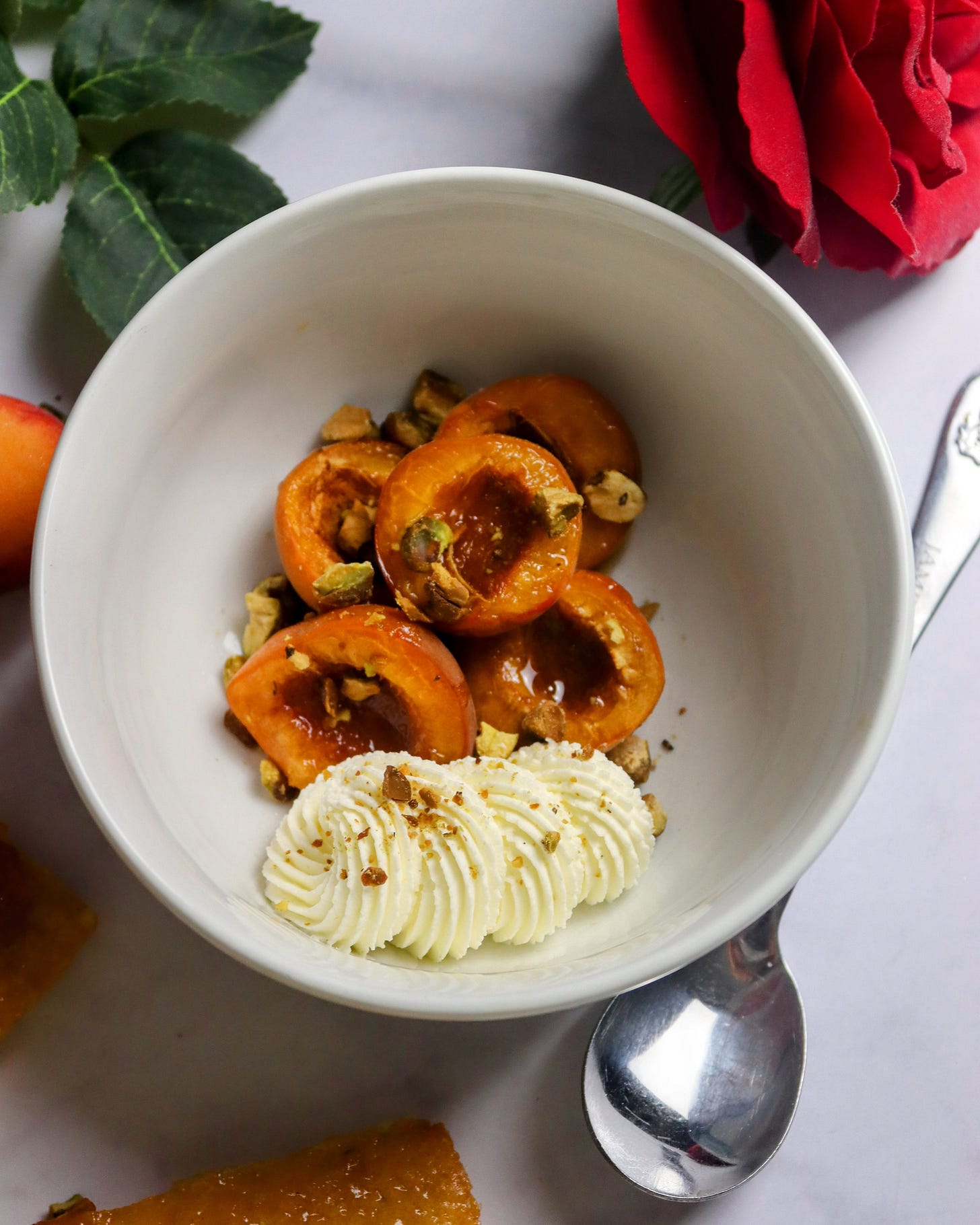
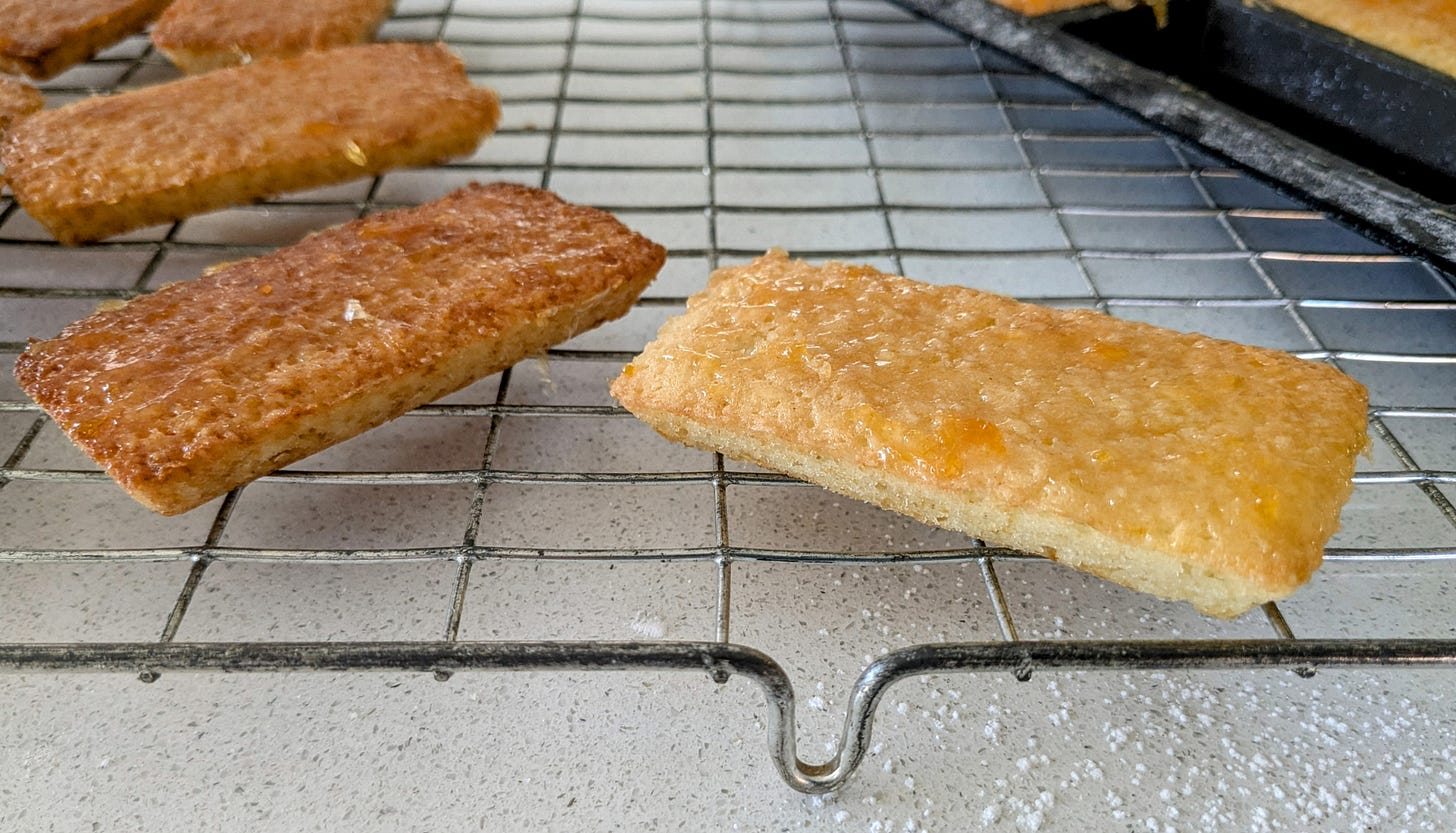

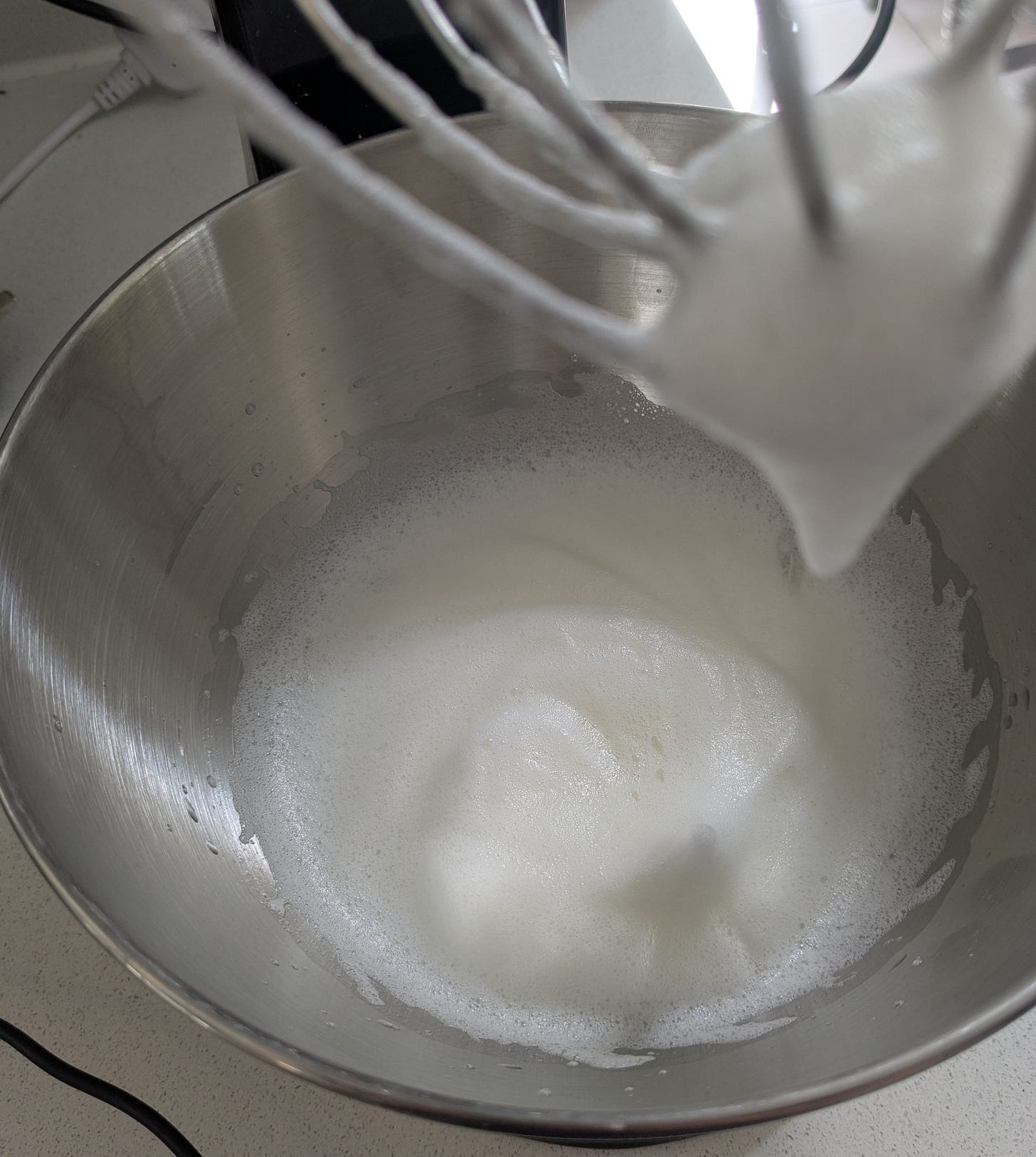
Lovely post Shell, I missed this one.
Beautiful. It makes sense, beating the whites causes the protein strands to lengthen and trap air. I like these.